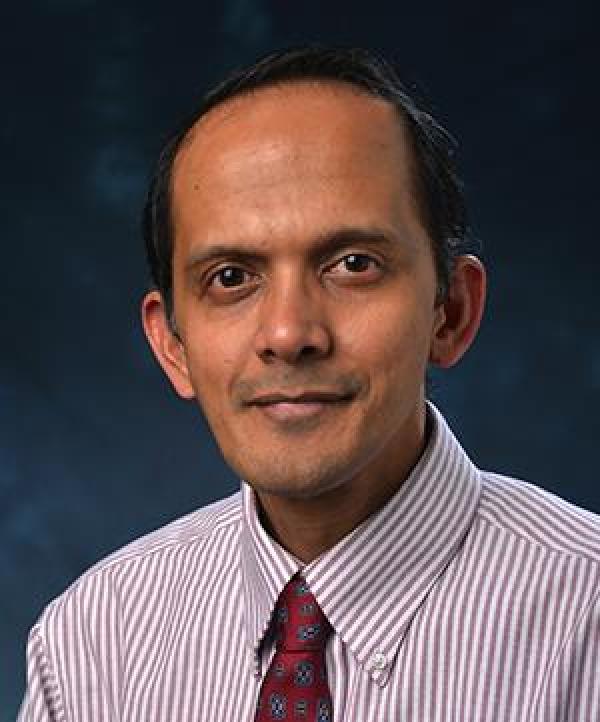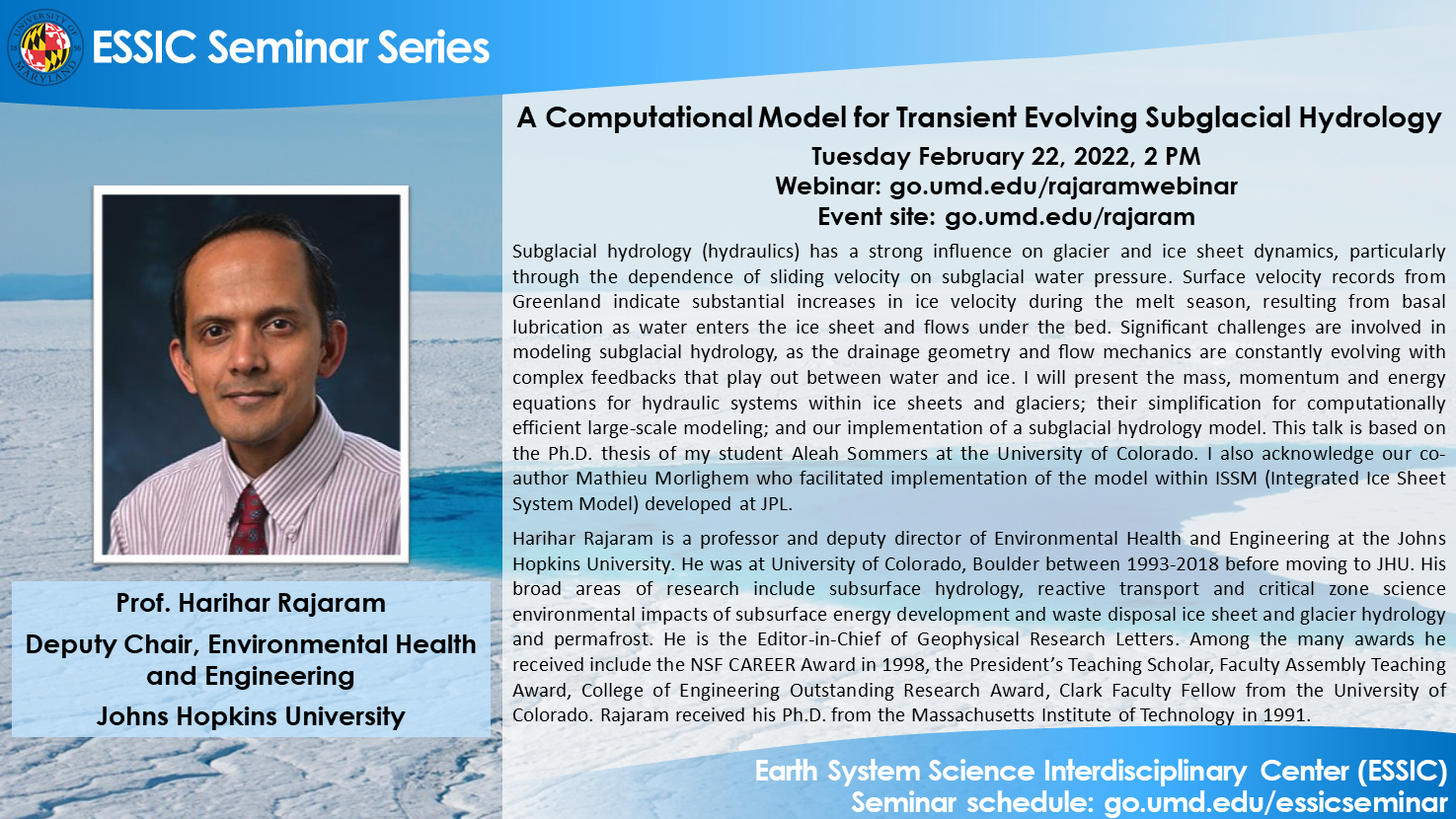
A Computational Model for Transient Evolving Subglacial Hydrology
This event has passed. View the seminar recording here:

Prof. Harihar Rajaram
Deputy Chair, Environmental Health and Engineering
Johns Hopkins University
Tuesday February 22, 2022, 2 PM ET
Abstract:
This talk is based on the Ph.D. thesis of my student Aleah Sommers at the University of Colorado. I also acknowledge our co-author Mathieu Morlighem who facilitated implementation of the model within ISSM (Integrated Ice Sheet System Model) developed at JPL.
Subglacial hydrology (hydraulics) has a strong influence on glacier and ice sheet dynamics, particularly through the dependence of sliding velocity on subglacial water pressure. Surface velocity records from Greenland indicate substantial increases in ice velocity during the melt season, resulting from basal lubrication as water enters the ice sheet and flows under the bed. Significant challenges are involved in modeling subglacial hydrology, as the drainage geometry and flow mechanics are constantly evolving with complex feedbacks that play out between water and ice. I will present the mass, momentum and energy equations for hydraulic systems within ice sheets and glaciers; their simplification for computationally efficient large-scale modeling; and our implementation of a subglacial hydrology model.
A clear tradition has been established in the subglacial hydrology modeling literature of distinguishing between channelized (“efficient”) and sheet-like (“inefficient” or “distributed”) drainage systems or components and using slightly different forms of the governing equations in each subsystem to represent the dominant physics. Specifically, many previous subglacial hydrology models disregard opening by melt in the sheet-like system or redistribute it to adjacent channel elements in order to avoid runaway growth that occurs when it is included in the sheet-like system. We present a new subglacial hydrology model, SHAKTI (Subglacial Hydrology and Kinetic, Transient Interactions), in which a single set of governing equations is used everywhere, including opening by melt in the entire domain. SHAKTI employs a generalized relationship between the subglacial water flux and the hydraulic gradient that allows for the representation of laminar, turbulent, and transitional regimes depending on the local Reynolds number. This formulation allows for the coexistence of these flow regimes in different regions, and the configuration and geometry of the subglacial system evolves naturally to represent sheet-like drainage as well as systematic channelized drainage under appropriate conditions. We present steady and transient example simulations to illustrate the features and capabilities of the model and to examine sensitivity to mesh size and time step size.
Biosketch:
Harihar Rajaram is a professor and deputy director of environmental health and engineering at the Johns Hopkins University. He was at the University of Colorado, Boulder between 1993-2018 before moving to JHU. His broad areas of research include subsurface hydrology, reactive transport and critical zone science environmental impacts of subsurface energy development and waste disposal ice sheet and glacier hydrology and permafrost. He is primarily a mathematical modeler, employing analytical, computational, and stochastic methods. He is the Editor-in-Chief of Geophysical Research Letters. Among the many awards he received include the NSF CAREER Award in 1998, the President’s Teaching Scholar, Faculty Assembly Teaching Award, College of Engineering Outstanding Research Award, Clark Faculty Fellow from the University of Colorado. Rajaram received his Ph.D. from the Massachusetts Institute of Technology in 1991.
Webinar:
Webinar: https://go.umd.edu/rajaramwebinar
Event site: https://go.umd.edu/rajaram
Webinar number: 2623 916 8225
Webinar password: essic
To join the audio conference only:
US Toll: +1-415-655-0002
Global call-in numbers
For IT assistance:
Cazzy Medley: cazzy@umd.edu
Resources:
Seminar schedule & archive: https://go.umd.edu/essicseminar
Seminar Google calendar: https://go.umd.edu/essicseminarcalendar
Seminar recordings on Youtube: https://www.youtube.com/user/ESSICUMD

